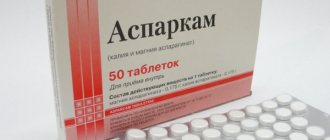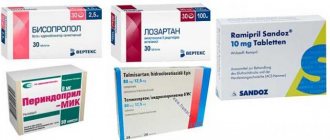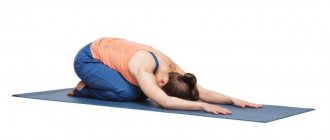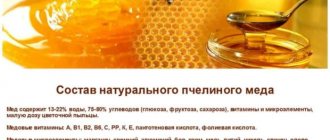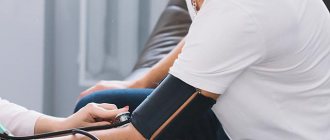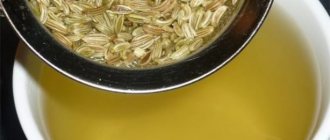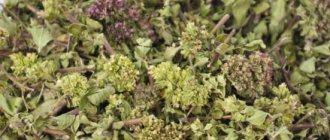The well-known “120 over 80” is only a small part of what we should know about normal blood pressure.
In fact, such pressure is already considered prehypertension. This is what the American Society for the Study of Arterial Hypertension says. And these are not the whims of foreign specialists. Russian doctors confirm that the risk of atherosclerotic vascular damage begins to increase when blood pressure (BP) goes beyond 115/75.
The modern classification of blood pressure looks like this:
- normal blood pressure - 115/75
- prehypertension - 120/80
- hypertension - 140/90
- hypertension I degree – 140/90 – 159/99
- stage II hypertension – 160/100 – 179/109
- stage III hypertension - 180/110 and above
If you have high blood pressure, then continue reading. Next we will talk about the causes and treatment.
The nuances of measuring pressure
Now we will talk about important details when measuring pressure. It is important to know this in order to see a doctor in time or not to panic over trifles.
Measuring pressure on different hands
Blood pressure readings may vary depending on which arm the measurement is taken on. This difference can reach up to 15 mm. rt. Art. As a rule, these are just measurement errors, especially for electrical appliances. But if the difference is higher than 15, then consult your doctor - this may be caused by stenosis of the subclavian artery. This means that an atherosclerotic plaque has appeared in the artery, which impedes blood flow.
Blood pressure measurement while lying and standing
If you measure the pressure while lying down and then ask the person to stand up, you can observe a slight decrease in blood pressure. But if the pressure drop is more than 20 mm. rt. Art. - this may be orthostatic hypotension. This is not an independent disease, but a signal of a circulatory disorder. In this case, you should also consult a doctor.
Doctor's blood pressure rises
It happens that people measure their blood pressure at home - everything is fine, but when they come to see a doctor - the readings are elevated. This is called "white coat syndrome." In this case, Holter monitoring should be prescribed - this is when pressure measurements are taken throughout the day, and then the average value is displayed. Based on the results obtained, doctors already draw conclusions whether there is a disease or not.
Even if the pressure is normal
About 40% of people have “latent hypertension” - this is when the pressure at a doctor’s appointment is normal and the disease is asymptomatic. But if you do daily blood pressure monitoring, the average values will show increased blood pressure. Such people live and do not suspect anything, but are at increased risk of a heart attack.
Causes of high blood pressure
Psychological reasons
Doctors trace a clear connection between high blood pressure and the activity of our nervous system. Many even call hypertension “the disease of unreacted emotions.”
Increased blood pressure is a natural defense mechanism that is triggered in response to a stressful situation. This helped ancient people cope with danger. As soon as I saw a tiger in the bushes, all systems of the body became active, the pressure jumped... And thanks to a sharp spear, the tiger was defeated. The pressure has returned to normal.
Now we react to stressful situations in the same way, only they are completely different. They called you to the boss, and you understand that you will get punished for an overdue report. You walk, and the pressure has already increased significantly. It increased even more when they called you a fool and promised to fire you for the next mistake. But you can’t answer your boss—your position doesn’t allow it. You return to your workplace, and the pressure increases even more from fantasies about being fired. On the way home, you are still thinking about how you could answer.
Every day a modern person has a lot of situations when a stressful situation triggers the mobilization of the body's resources. But resolution did not occur either on the physical or psychological level. This is called “unreacted emotions.” In the West, this situation is called “essential hypertension” or hypertension of unknown cause.
Kidneys
To function normally, they need increased blood pressure. The kidneys give the order to our body to increase pressure, thereby ensuring a normal level of filtration.
It may happen that an atherosclerotic plaque settles somewhere in the renal vessels. It could appear due to the same hypertension. So the kidney, in response to this, promotes a powerful release of hormones and biologically active substances. It increases the pressure until it receives the required blood flow.
In this case, nothing can be opposed to the kidney - it has a “powerful gun”, and doctors have “small pistols”. It is because of this that high blood pressure is treated not only by cardiologists, but also by nephrologists.
Increased salt intake
Salt is NaCl, and an excessive concentration of Na ions causes them to accumulate on the walls of blood vessels. Sodium attracts water, which causes blood vessels to swell and contract. To ensure normal blood flow, the body is forced to increase blood pressure.
On average, we consume 12 g of salt per 24 hours - this is 2 times more than normal. And if you are over 50, have diabetes, kidney disease or cardiovascular disease, then you should not consume more than 4 g of salt per day.
It could also be:
- heredity
- overweight
- alcohol and cigarettes
- passive lifestyle
- diabetes
- hormonal pathologies
We will not go into all the reasons so as not to make the article too long. But if you still have questions about any of these points, write in the comments.
The combination of therapeutic fasting with physical activity gives good results.
On average, a person loses 8-9 kg in ten days, another two kilograms are lost when leaving hunger. You need to come out of fasting gradually. For the first two days, drink freshly squeezed juices, half diluted with water, every four hours. Then every day add a new type of food: Urbech “Linyanoy”, vegetables, salads, porridge, and after about a week switch to a nutritious diet.
After fasting, you should stick to mainly plant-based foods and not exceed your normal weight.
How to normalize blood pressure
DASH Meal Plan
Scientists have studied different diets to see which one is best for normalizing blood pressure. As a result, they developed an eating plan called DASH. This is literally translated as dietary measures that stop hypertension. In many ways, DASH coincides with the basic principles of proper nutrition and the Mediterranean diet:
- Restricting Total Calories Many articles have been written and hundreds of scientific studies have been conducted to prove that limiting your intake increases life expectancy and improves health. We will talk about this in more detail in the next article.
- Emphasis on vegetables and fruits This is important because they contain the fiber necessary for our body. It not only has an antitumor effect, but is guaranteed to lower blood pressure levels. From vegetables and fruits you will get potassium, which only 1% of people with hypertension consume in the required amount. Potassium also has a hypotensive effect, which means that it normalizes blood pressure. Vegetables and fruits are high in folic acid and flavonoids, which lower blood pressure and protect against cardiovascular diseases.
- Eat more fish Fish contains docosahexaenoic acid (DHA) and eicosapentaenoic acid (EPA). It has been scientifically proven that these substances normalize the functioning of the cardiovascular system and normalize blood pressure. Omega-3 fatty acids also help maintain cardiovascular health by participating in the regulation of blood clotting and vascular function.
- Low-fat dairy products This is an excellent source of calcium, which also helps normalize blood pressure. Low-fat products are recommended, because a large amount of milk fat can reduce the beneficial effect.
- Limiting salt, alcohol and meat It is especially important to avoid excess salt. We have already talked about the standards to which it is necessary to reduce its consumption. Alcohol - no more than one glass of wine, and meat no more than three times a week. Be sure to exclude fast food, chips and carbonated drinks from your diet.
- Eliminating trans fats from your diet Most harmful fats are found in baked goods - cookies, pastries and cakes are mainly prepared using cooking oil. Therefore, such products can contain up to 10% trans fats - this is up to 5 g per 100 g of product. Normally, you can consume up to 2 grams of such fat. Or better yet, 0. If you exceed your intake of trans fats, you risk increasing your risk of cardiovascular disease by a quarter.
Physical activity - aerobic training
Diet itself does not fully normalize blood pressure. For a good result, she needs her main ally - physical activity.
We are mainly talking about moderate aerobic exercise - swimming, light jogging, brisk walking, exercise bikes, etc. Such physical activity normalizes blood pressure due to:
- moderate vasodilation
- cleansing due to changes in the biochemistry of the vascular walls
- reducing the risk of atherosclerotic plaque formation
Losing weight and giving up bad habits
Losing weight and giving up bad habits is easy if you start practicing therapeutic fasting. Or more precisely, fasting-dietary therapy (RDT).
This method has been proven effective in the fight against excess weight and bad habits for more than 30 years.
While undergoing a course of therapeutic fasting, you have the opportunity to eliminate junk food, cigarettes and alcohol for up to 7 days. This time is enough to lose up to 7 extra pounds, “reboot” your thinking and no longer return to bad habits.
Dental clinic No. 2
A healthy lifestyle is extremely important if you have hypertension. All patients with blood pressure readings above 120-130 by 80-84 millimeters of mercury urgently need to change their usual lifestyle and diet. This includes: limiting smoking and drinking alcohol, properly preparing a nutritious diet, and exercising. All this will reduce the factors that affect the formation of hypertension. including atherosclerosis. The goal of treating hypertension is to lower blood pressure, which will help prevent damage to vital organs. Hypertension is dangerous due to complications from various organs and systems, such as stroke. myocardial infarction. heart failure. renal dysfunction. as well as pathology of the retina. As a result, the quality of life deteriorates significantly, a person’s working capacity decreases, even to the point of disability. For this reason, many countries around the world have developed and launched national programs to combat hypertension, and numerous pharmaceutical laboratories are developing safe, effective and easy-to-use drugs to control blood pressure.
What is hypertension?
We are talking about a disease in which blood pressure levels exceed normal values. For a person of any age, a blood pressure of up to 130/85 millimeters of mercury is considered normal. Starting from a pressure reading of 140/90 mm Hg. we can talk about the presence of arterial hypertension in a person. Pressure 130-140/85-90mmHg. considered as elevated normal.
The causes of hypertension include:
negative psycho-emotional effects; overloading the diet with table salt; age-related restructuring of endocrine organs.
But these circumstances occur quite often in life, so for the formation of hypertension, predisposing factors (acquired and hereditary) are also needed. The main ones:
change in cell membranes; increased activity in nerve regulation centers; weakening of the regulatory functions of the kidneys.
In the chain of formation of hypertension, the first link is usually an emotional experience. What to do for hypertension
If you start treating the disease in a timely manner, this will reduce the risk of complications such as myocardial infarction, stroke, and heart failure. For blood pressure above 140 per 90 millimeters of mercury, experts recommend conventional drug treatment. In patients with chronic kidney disease or diabetes, the recommended blood pressure level is lower than 130 per 80 millimeters of mercury.
If you have high blood pressure and have questions regarding your well-being, you can use our online doctor consultation service. where you will receive a detailed answer to your questions.
Thus, the treatment of arterial hypertension includes two main factors: drug treatment and lifestyle changes. Why is it important to lead a healthy lifestyle?
A healthy lifestyle for hypertension, as for any chronic disease, is one of the main factors for effective treatment. Lifestyle changes are considered a critical step in the treatment process, as well as in the prevention of arterial hypertension. In this case, special attention is paid to the following factors:
Psychological climate Changing diet Physical activity Quitting bad habits
Now let’s take a closer look at each of these fundamental points. Psychological climate
Stress. conflicts, quarrels in the family, insufficient sleep, excessive emotional stress become the causes of feelings such as anger, melancholy, rage, jealousy, and fear. And negative emotions. in turn, lead to excessive synthesis of adrenaline. the action of which causes an increase in blood pressure, disruption of the regulation of the nervous and circulatory systems.
Therefore, the most important thing in the fight against hypertension is maintaining goodwill and creating a healthy psychological atmosphere. Each person suffering from hypertension must develop their own individual method of dealing with stress. This could be a walk, communication with a pet, meditation, auto-training. The main thing is that the chosen method is right for you. Diet
A healthy lifestyle with hypertension involves diet correction. And in some cases, this alone is enough to keep blood pressure levels under control.
The main directions for changing the diet of a hypertensive patient are as follows:
Limiting calorie intake to control weight. Excess weight is one of the main risk factors for hypertension. You should avoid eating sweet, fatty and starchy foods. It should be remembered that fasting is contraindicated for patients with hypertension, since there is a lack of protein in the body. vitamins and microelements negatively affects the state of the cardiovascular system and metabolism. Limiting the content of animal fats in the diet. This is simultaneously aimed at reducing caloric intake and preventing atherosclerosis, which is one of the risk factors for hypertension. Foods rich in cholesterol (liver, brains, caviar) should be excluded from the diet, and butter, cheeses, sour cream, sausages, lard, fried cutlets should be replaced with additional portions of vegetables and fruits, vegetable oil, and lean fish. Dairy products are preferably low-fat. Limiting salt. Excess sodium in the body promotes water retention, which leads to vasoconstriction and spikes in blood pressure. Pickles, smoked meats, chips, salty cheeses, and canned foods should be excluded from the diet of hypertensive patients. The amount of salt used in cooking should be reduced to 1 teaspoon per day. Enriching the diet with magnesium and potassium, which reduce the tendency of blood vessels to spasm. strengthen the nervous and cardiovascular systems. A large amount of potassium is found in foods such as apricots, prunes, cabbage, potatoes, pumpkin, bananas, and rose hips. Carrots, lettuce, beets, parsley, walnuts, black currants, black bread with bran, oatmeal and buckwheat are rich in magnesium. Eating foods rich in vitamin C has a strengthening effect on the walls of blood vessels. Vegetables and fruits, which contain large amounts of vitamin C, are best consumed raw or subjected to short heat treatment. Citrus fruits, rose hips, black currants, sea buckthorn, and Sudanese rose flowers are rich in vitamin C.
Physical activity
A healthy lifestyle for hypertension involves regular moderate physical activity. Walking, swimming, and physical therapy exercises are especially useful. The load should increase gradually. During exercise, you must regularly measure your pulse. the frequency of which should not exceed the age limit, determined as follows: 180 minus age in years.
The most harmful to blood vessels is smoking. Quitting bad habits.
The most harmful to blood vessels is smoking, which is very common among the population of our planet. This habit not only significantly worsens the condition of a hypertensive patient, but also contributes to the further development of hypertension and the development of its complications, such as stroke and myocardial infarction. Take the disease into your hands!
No matter how much they write about hypertension, it’s not enough. For this disease makes every third person suffer in Russia today. In itself destructive, this disease underlies the development of angina, heart attack, and stroke.
What about the means of struggle? Synthetic drugs, etc. don’t drink, don’t smoke, walk in the fresh air, eat less salty foods, more vegetables and fruits, etc.? If the path to freedom from disease is so simple, why do millions suffer from this disease? Can't overcome bad habits? How can an ordinary person, not a hero in his strong-willed qualities and not rich, avoid the blow of hypertension? Is there anything new or original in the fight against it? Healthy lifestyle correspondent Alexander Midler asked these questions to Vladimir Ivanovich Baksheev, candidate of medical sciences, doctor of the highest category, head of the emergency medical care and home care department of the 52nd Consultative and Diagnostic Center of the Ministry of Defense of the Russian Federation.
Vladimir Baksheev: Do you want something original? It is not the original that is important here, but the correct. This, I believe, is reasonable nutrition, physical activity and giving up bad habits.
Smart Eating
• What does the body lack in hypertension? First of all, potassium salts. There are a lot of these salts in cabbage, pumpkin and apricots, and truly rich sources of potassium are rose hips, prunes, dried apricots and raisins.
• The body needs the help of magnesium salts. They have a vasodilating effect and relieve vasospasm. You will get these salts in porridges - oatmeal, millet, barley and buckwheat.
The food that saves you from rising blood pressure is basically very simple - according to the proverb: “Soup cabbage soup and porridge are our food.” But, of course, it will be noticeably better if you supplement this healthy basis of the diet with parsley, lettuce and carrots.
Now dessert: nuts and berries. Among berries, black currants contain the most magnesium salts, and among nuts, they are mainly found in almonds and walnuts. For example, it’s great if you can afford to eat 100 g of crushed walnuts per day in 3-4 doses, mixing them with 60 g of honey. Course - 45 days.
• In general, honey preparations are very good. I recommend this recipe: pass the cranberries through a meat grinder, mix with an equal amount of honey and take 1 tbsp. spoon three times a day 20 minutes before meals. And second: squeeze the juice from the beets and mix half and half with honey. Take 1 tbsp. spoon 3-5 times a day.
• You need to reduce your blood pressure. One of the most accessible ways to gradually and gently lower blood pressure is to eat 50 g of grated raw potatoes on an empty stomach - morning and evening.
Lingonberry juice and berries perfectly stabilize blood pressure (take 200 g 2-3 times a day; treatment course is 10 days). Fermented viburnum berries with sugar are excellent in the fight against high blood pressure - take 2-3 tbsp. spoons 3 times a day for three weeks. Chokeberry berries are very useful in the fight against hypertension. If possible, eat 100 g of them half an hour before meals three times a day. The course of treatment is a month. And finally, beet juice. I recommend taking it 1 tbsp. spoon three times a day for 2-3 weeks.
You need to boost your metabolism, and this is well influenced by foods containing iodine, especially seaweed. It is necessary to sharply reduce table salt in your diet, reduce blood cholesterol levels and body weight.
What is important here is, so to speak, the main food. If you focus on relatively inexpensive products, then pasta and rice are good for hypertensive patients. Dairy products include skim milk, egg whites and low-fat cheeses. Then I recommend vegetable soups. Fish is healthy (the only thing is, don’t eat the skin of fish, especially sardines and smelt). Meat: young lamb, chicken, rabbit. All fresh and frozen vegetables are healthy, especially legumes: beans, lentils, peas, corn.
Enter, if you have enough determination and money for it, days when you eat only vegetables and fruits: 1-1.2 kg in 4-5 doses.
Physical activity
• Increase the movement. Hypertension most often develops in people with sedentary occupations. At risk today are all those who train their body less than 4 times a week! And of course, these are the majority. True, it is important not to “go overboard” here, because from 5 to 15% of cases of acute heart attack occur due to irregular and excessive physical activity. Only systematic training, which is based on gradualness, consistency and knowledge of your personal norm, firmly resists hypertension. Swimming, cycling, gymnastic exercises, jogging, walking - in all cases you need to feel what is necessary and sufficient for your health. You also need to know the general norm. For example, walking is the best way to combat hypertension: walking does not need to be learned, it can be done anywhere, it is easily combined with everyday activities and does not require material costs. So, the best walking pace is one at which you are able to talk while walking. When you're walking so fast you can't talk, slow down. If you can sing while walking, speed up your step. For a person prone to hypertension, the time of daily training walking should be increased gradually: from 6 to 45 minutes. The intensity of the first training sessions should be low. At the same time, always start by warming up your muscles and don’t be alarmed if they hurt a little at the beginning of walking. In a day or two you will adapt to the stress and the pain will go away.
Find an opportunity to do this by choosing a time convenient for you so that exercise becomes a necessary part of your life. You can exercise for 5, 10 or 15 minutes a day with breaks, but in order for the total time for exercise to be at least half an hour per day, even better is those same 45 minutes.
Rejection of bad habits
• It is necessary to build a new relationship with alcohol and smoking, based on the fact that the consequences of hypertension, such as angina and myocardial infarction, develop several times more often in smokers than in non-smokers.
If you want to get rid of the craving for smoking without overexerting your will, there are simple folk methods that have been proven by generations: rinse your mouth before smoking with a solution of baking soda (at the rate of 1 tablespoon per 1 glass of water) or a decoction of oats (10 g per 200 ml of water).
As for alcohol, it does not need to be completely excluded from life. In the absence of individual contraindications for health reasons, men can drink 1 glass of vodka or 1 glass of wine, or 1 bottle of beer daily without noticeable harm to their health. For women, the average norm is half as much, again taking into account age and health status.
I will not dwell on treatment with synthetic drugs - they will be prescribed by a doctor. I will only say: of course, in a number of acute cases, drug treatment is necessary. As Hippocrates once said: “For an emergency state of illness, there are emergency means.” But we will try not to let it get to this point. And for this, we will focus on medicinal plants in treatment. (By the way, they are useful at any phase of the development of hypertension).
The main medicinal properties of hawthorn, mistletoe, motherwort, cudweed, valerian, chokeberry, astragalus, birch leaves, leaves and berries of blueberries, strawberries, lingonberries, rowan fruits, dill fruits, rose hips, white magnolia, viburnum, lemon balm (or mint) ), shepherd's purse grass, knotweed grass, sweet clover grass, flax seed, drop cap grass.
If you do not find any of these herbs and fruits, prepare infusions without the missing ones. There are many options for fees. Here is a typical collection: motherwort herb - 4 parts, dried cucumber - 2, hawthorn fruit - 1, mint leaves - 0.5, shepherd's purse herb - 1, rowan fruit - 1, dill fruit - 1, flax seed - 1, strawberry leaves - 2. Method of preparation: 2-3 tbsp. spoons of the mixture pour 2.5 cups of boiling water into a thermos. Leave for 6 hours. The next day, take the entire infusion in three warm doses 0.5 hours before meals.
Carry out herbal medicine courses for 4 to 6 months with breaks of 10 days every month and a half. If after 2-3 months you can feel that hypertension is receding, in this case, reduce the dose and frequency of administration.
To summarize: many consider the development of complications of hypertension to be inevitable. I am convinced that this is a mistake. Thoughtful physical activity, precise selection of nutrition, proper use of medicinal herbs, meaningful, targeted use of official medicine will give you the opportunity to take hypertension into your hands.
Therapeutic fasting as a medical method has proven its effectiveness in the fight against hypertension
Unloading and dietary therapy, being an official medical technique, helps normalize blood pressure. The process looks like this:
- At the beginning of the course, blood pressure decreases;
- During fasting, profound changes occur at the level of ion exchange. The therapeutic effect is explained by the retention of potassium, magnesium and chlorine ions against the background of a relative loss of sodium;
- At the final stage of fasting, blood pressure sometimes drops below normal. But after cessation of fasting, blood pressure levels improve relative to those before fasting.
If you are interested in details, you can read an article about this in the scientific journal “Modern Science-Intensive Technologies.”
Receive personalized fasting advice, discount and free treatment
Therapeutic fasting is an ambulance for extremely aggressive forms of hypertension.
The effectiveness of therapeutic fasting is much higher than any pharmacological drug treatment.
In some cases, the situation with hypertension is critical - there is no time to rely on herbal medicine and a therapeutic diet. It should be understood that advanced stages of hypertension with stable and excessively high pressure levels, for example above 190 units, are life-threatening and are fraught at any time with a stroke or heart attack. Here we need more accelerated radical help. Here it is especially advisable to use unloading therapy courses in treatment. Practice has shown that a decrease in blood pressure parallels weight loss. This allows some patients to refuse medications or significantly reduce their dose. It has been proven that with the loss of one kilogram, upper pressure decreases by 1.2 millimeters of mercury, and lower pressure by one.
